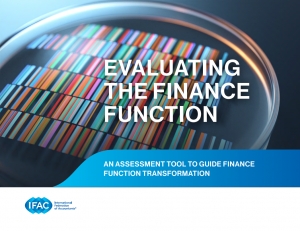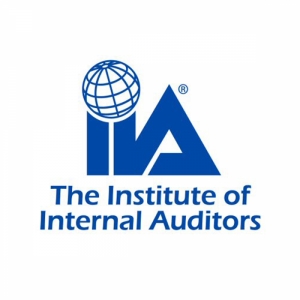عرض العناصر حسب علامة : الرقابة الداخلية
5 خطوات لمنع الاحتيال
بينما لا أحد يريد تصديق حدوث الاحتيال في مؤسسته، لسوء الحظ، يمكن أن يحدث هذا بالفعل. عادةً ما يكون الاحتيال جريمة، مما يعني أن وضع تدابير وقائية للاحتيال يمكن أن يساعدك في تقليل الاحتيال قبل أن يبدأ.
معلومات إضافية
-
المحتوى بالإنجليزية
5 steps to prevent fraud
By Brandy Keller
October 26, 2021 3:00 PM
Facebook
Twitter
LinkedIn
Email
Show more sharing options
While no one wants to believe fraud is occurring at their organization or nonprofit, unfortunately, it can and does happen. Typically, fraud is a crime of opportunity, which means that putting preventative fraud measures in place can help you reduce fraud before it starts.
Here are five steps you can put in place no matter what size your organization is to decrease your risk of fraud. Remember, when you have formal reporting mechanisms in place for fraud, you are setting the foundation of fraud reduction.
Whistleblower policy
fraud-detect.jpg
Sean Gladwell/Getty Images/Hemera
Create a clear fraud whistleblower policy for your organization and its employees. Make sure this fraud policy is part of employee onboarding, and part of your employee handbook. Conduct background checks during the hiring process. Post the fraud policy in your office as well as on your internal website. Establish different ways any employee can report fraud, including a tip hotline, anonymous email and an internal fraud website reporting link.
Note: Make sure your whistleblower policy includes a no-retaliation clause, a reporting procedure and confidentiality protection for the whistleblower. For a sample whistleblower policy for nonprofits, see these resources from the Council of Nonprofits.
Tips
Encourage employees to submit a tip or concern of fraud at any time and make sure they can do so via email, phone or in an anonymous tip box onsite. Help employees understand that they are part of the fraud protection team.
Note: The latest Report to the Nations from the Association of Certified Fraud Examiners found 43% of occupational fraud was reported through tips.
Internal controls
Ensure that you have internal controls to protect the security of your data, assets and any proprietary information in place, and that you update them on a regular schedule.
One of the most important controls you can implement is the segregation of transactions. Fraud is more difficult to pull off if you need to get multiple people involved. Typically, fraud is only perpetrated by one person alone, so if you have more people involved, the more you can deter fraud.
Don’t have a single employee handling the entire cash processing cycle. By assigning more than one staff member or employee to handle the processing and accounting for cash from beginning to end, organizations can lessen the opportunity for fraud. These multiple staff processing systems provide a benefit not only in fraud reduction but also in the security of the cash received and proper reconciliation for the donations.
Organizations should also avoid a single employee having sole responsibility over reconciling cash or asset activities. Putting checks and balances in place for any transactions processed will reduce the opportunity for fraud. Using a fund accounting software solution can help you to have internal controls in place that will flag entries or variances of a budget that would be otherwise undetected.
Keep in mind as well that fraud can be as simple as one employee printing out duplicate checks, or forging signatures on checks, so you want to keep all company checks locked up. Many companies also employ a two-signature check system so any check larger than $500 must be signed by two different people on the financial team.
Make sure you have your organization’s financial tasks segregated when it comes to processing cash and checks or reconciling cash, checks and payments. It is much easier to cover up fraudulent activities if the person committing the fraud is the only person with access to the full accounting system.
Fraud can be committed at any level of the organization so it’s important that all internal controls for fraud apply to every role at your organization.
Note: Internal accounting controls might include user role restrictions, protected access to proprietary asset information or funds, and alerts for budget variances.
Audits
Make sure you’re not waiting for a yearly audit to detect any fraud that might be occurring. While fraud is sometimes detected through an audit, don’t depend on or wait for a yearly audit to find fraud.
Note: Financial statement fraud is one kind of fraud that can occur. This includes net worth overstatements or understatements, misstating or overstating assets, false revenues or understated revenues, as well as improper disclosures. These are items an auditor will be looking for throughout an audit.
Internal fraud assessments
Build internal fraud assessments into your yearly organizational calendar, and make sure your managers and employees know your company conducts fraud assessments regularly.
Just as you do yearly reporting to your stakeholders, think about conducting yearly fraud awareness training. Research shows that more tips on fraud come through organizations that have standard fraud awareness training in place, in addition to a fraud policy.
If fraud is committed at your organization, once it’s resolved, use the opportunity to discuss how the fraud occurred, what was lost and how it happened as part of your fraud awareness training. When you have fraud awareness training, the more you can use real-world specific fraud events that correlate with your type of organization or nonprofit, the easier it will be for everyone to understand how to detect fraud.
5 عوامل رئيسية لتعزيز فعالية لجنة التدقيق
إخفاقات الشركات وفضائحها عبر البلدان، بما في ذلك الانهيارات الأخيرة لشركة Carillion و Patisserie Valerie و London Capital & Finance في المملكة المتحدة، والاخفاقات في الكيانات المملوكة للدولة في جنوب إفريقيا Transnet و Eskom و South African Airways، وTransnet و Eskom و South African Airways، وفضيحة 1MDB في ماليزيا على سبيل المثال لا الحصر، ركزت جميعها علي الاهتمام السياسي والتنظيمي على مهنة التدقيق وكشفت أيضًا عن إخفاقات خطيرة في حوكمة الشركات.
معلومات إضافية
-
المحتوى بالإنجليزية
5 Key Factors to Enhance Audit Committee Effectiveness
Laurie Tugman, Laura Leka | September 20, 2019 | 2
Corporate failures and scandals across countries, including the recent collapses of Carillion, Patisserie Valerie and London Capital & Finance in the UK, failings in South Africa’s state-owned entities Transnet, Eskom, and South African Airways, and the 1MDB scandal in Malaysia to name a few, have all focused political and regulatory attention on the audit profession and also exposed serious corporate governance failings.
The result is increased debate globally on audit and governance regulatory reform.
Companies do not fail because of poor quality audits. An audit is designed to enhance confidence in financial reporting, but it does not relieve management or those charged with governance of their responsibilities. Ultimately, corporate failures and the resulting impacts on financial statements are consequences of poor governance and decisions.
Effective governance is underpinned by purpose, vision, values and ethics, that are reflected in the behaviors and actions of the board and management team and cascaded throughout the organization. The board in conjunction with management is responsible for setting the tone at the top, shaping the culture of the organization, and setting strategic direction. Organizations need to be proactive in driving improvements in their governance beyond adherence only to minimum requirements.
The board has ultimate responsibility for the integrity and accuracy of the company’s financial reporting, which includes ensuring implementation of internal controls over financial reporting, adoption of appropriate accounting policies, and appointment and oversight of independent external auditors. These responsibilities are often delegated by the board to its audit committee. But this delegation does not absolve the board of its obligations and accountability to shareholders and other stakeholders.
IFAC strongly supports efforts to strengthen and clarify the roles of boards and audit committees in exercising oversight of the statutory audit and financial reporting processes led by management, including addressing perceptions that audit committees are not sufficiently independent of management, or that there is insufficient communication from the audit committee to shareholders.
Effective audit committees are a critical part of delivering trust and confidence in reporting and risk management. However, globally audit committee responsibilities are widening beyond their core financial reporting oversight responsibilities, putting them under increasing pressure both in terms of time and expertise to oversee the major risks on their agendas in addition to fulfilling their core mandates.
Often if the board is not directly dealing with a matter or there isn’t another appropriate committee, by default whatever is left over falls to the audit committee to oversee: for example, cyber security and other technology related matters, as well as risk management beyond financial risk.
Audit committee responsibilities vary widely across jurisdictions, sectors and between companies. It is important to recognize that there is no one-size-fits-all model for audit committees and therefore enhancing their effectiveness will be more dependent on adoption of good practices rather than further prescriptive legislation or additional regulatory scrutiny.
With the input of IFAC’s Professional Accountants in Business (PAIB) Committee we have been exploring ways to enhance audit committee effectiveness and have identified five key factors:
1. Audit committee transparency
Increased transparency on how an audit committee has discharged its duties is crucial and enables a more informed assessment of its performance and effectiveness.
Many corporate governance codes and regulations include requirements around audit committee disclosure. In addition, voluntary disclosures continue to grow, reflecting that audit committees are responding to evolving expectations of investors and other stakeholders.
But while audit committee reporting may be increasing, the usefulness of disclosures varies.
In the US the CAQ 2018 Audit Committee Transparency Barometer, a review of audit committee disclosures by S&P 500 companies, revealed increased disclosure around audit firm appointment, length of audit firm engagement, change in audit fees, and criteria used to evaluate the audit firm. However, decreased disclosure was found around key questions such as:
Is there a discussion of audit fees and their connection to audit quality? 5% of companies included this, representing a continued downward trend since 2014 when 13% included this discussion
Is there a disclosure of significant areas addressed with the auditor? 0% included this vs 3% in 2014.
For audit committee reporting to be meaningful, there needs to be strong and candid disclosure of the audit committee’s work and key areas of its agenda and discussions. Such disclosure should provide insights on the significant issues the audit committee considered in relation to the financial statements, and how these issues were addressed.
If enhanced reporting by auditors through disclosure of key audit matters is mirrored by the audit committee in their own reporting, this could drive improved audit committee disclosure. It would be unusual for the audit committee not to give their perspective on an issue that the auditor considers a key audit matter. Analysis of audit committee reporting in the UK, shows how disclosure on material financial reporting risk is strongly aligned to auditor reporting on key audit matters.
2. Effective communication
The importance of effective communication flows to and from the audit committee cannot be overstated. This includes written and in person, formal and informal, communication with management, internal and external audit, the CFO and finance function, and the board.
For support in its oversight role, the audit committee relies on:
Meaningful insight from management on emerging risks on the horizon and focused updates on what is happening in the business, moving beyond the basics of what they do to focus on specific challenges, risks and opportunities
Concise and understandable meeting materials from management, the CFO and finance function, as well as internal and external audit. The volume of materials an audit committee must review can become unmanageable. Written information presented to the audit committee needs to communicate only the most important and relevant information for their attention
Unrestricted access to the auditors without management present, as well as ongoing dialogue with the auditors outside of the audit window, to deal with issues on an ongoing basis and not just at the time of the audit
Informal communication with management and the CFO between audit committee meetings
Direct access to teams and departments, including those outside of finance, when appropriate (and ensuring the audit committee does not overstep its governance role).
The audit committee also needs to communicate with the board how it has discharged its responsibilities. It is not enough for the board to simply ‘rubber stamp’ reports from the audit committee; there needs to be full discussion and deliberation on key aspects of the audit committee’s work and any significant issues they have identified that warrant the full board’s attention.
3. Committee composition – including appropriate skills, competencies and expertise
Ensuring the right composition of the audit committee is vital but can be challenging. Requirements vary across jurisdictions, but generally there must be at least one member who is financially literate. This can put a huge burden on one individual if they are the only person on the audit committee to have financial reporting and accounting expertise.
Diversity of experience, perspectives and expertise, as well as industry knowledge are also extremely important, particularly given the widening mandates of audit committees beyond financial reporting oversight.
Audit committee members need continuing development and education to help them keep up-to-date on current issues. But often there is no formal education for audit committee members and even cases where audit committee members have never interacted with auditors prior to joining the audit committee.
Training programs, guidance and other support tools are essential to ensure the audit committee maintains knowledge of relevant developments in accounting and corporate reporting, as well as new technologies and their impact on the business and future of audit. Approaches to ensuring sustained expertise of the audit committee can be varied and include formal training and education, mentoring, and engagement with experts inside and outside the organization.
While the audit committee can rely on outside expertise, it is important that an effort is made to provide continuing professional education in order to understand emerging issues and develop an awareness of best practices.
4. How it gets its work done – efficient and effective ways of working
Audit committee mandates typically always widen, but nothing is generally removed. With increased workload along with increased complexity of risks on their agendas, audit committees need efficient and effective ways of working to ensure they can successfully discharge their oversight responsibilities.
Good practices include:
Having well-defined terms of reference setting out a clear scope of responsibilities, which are widely understood by the audit committee members, as well as by others in the organization including the board, CFO and finance function
Coordination between auditor, audit committee, and internal auditor to prevent duplicated effort, increased cost and poor effectiveness
Appropriate frequency and efficiency of meetings with focused agendas that allow sufficient time and attention for in-depth discussion on critical areas, as well as flexibility to add additional items as they arise
Producing short summaries to circulate to audit committee members in advance of meetings outlining key areas of focus for discussion
Holding a call or prep meeting between the audit committee chair and the auditor before each audit committee meeting.
5. Strength of the finance function
The finance function is responsible for producing reliable and auditable information for external disclosure. The strength of the finance function is therefore critical in supporting the oversight role of the audit committee, which can be severely inhibited by a weak finance function that lacks capacity, expertise or effective CFO leadership.
Considerations for the audit committee include whether the finance function is appropriately staffed and resourced, has suitably qualified people in key positions, as well as whether it has support for its continued development.
The audit committee also needs to consider whether they should have a role in appointment of key finance staff and finance function succession planning. The EY UK report Appointing CFOs for a rapidly changing world: the role of the Audit Committee suggests that “When it comes to appointing a new CFO, the audit committee chair should be an integral part of the interview process.” Indeed, “It’s a brave CEO who vetoes the audit committee chair’s recommendation.”
Much of the transactional work of the finance function including preparation of the financial statements is being enabled by technology, giving the finance function opportunities to improve its productivity, efficiency and effectiveness, and focus its attention on other value adding activities. To meet the future needs and demands of business, finance functions must transform themselves from technical support functions to business partners that enable and support decision making across their organizations.
To maximize the finance function’s value to the business, organizations need mechanisms in place to assess its effectiveness and support its development. Ultimately this responsibility lies with the board but may too be delegated to a committee of the board such as the audit committee.
In South Africa, which adopts a combined assurance model, the King IV Code on Corporate Governance recommends that the audit committee should provide independent oversight of the effectiveness of the organization’s combined assurance arrangements, including external assurance service providers, internal audit and the finance function. It also recommends that the audit committee discloses their views on the effectiveness of the CFO and finance function.
To support finance function transformation, IFAC has recently launched its “Future-Fit” series, which includes a high-level evaluation tool designed to support dialogue at the board (or audit committee) on the importance of finance function development, as well as help to identify priority areas for finance function investment.
العديد من جوانب الاحتيال في المشتريات
المشتريات هي واحدة من أهم وظائف الأعمال، والتأثير على الإستراتيجية والأداء التشغيلي وإدارة المخاطر. المدققون الداخليون هم لاعبون أساسيون في هذه العملية، حيث يوفرون ضمانًا بأن ممارسات الشراء تعزز الوصول والمنافسة والإنصاف.
معلومات إضافية
-
المحتوى بالإنجليزية
Procurement is one of the most important functions of business, impacting strategy, operational performance, and risk management. Internal auditors are key players in the process, providing assurance that procurement practices foster access, competition, and fairness.
Internal auditors also have a responsibility to promptly identify and report deceptive activity, and provide recommendations that strengthen internal controls. Internal auditors must be alert to red flags for dishonest conduct in procurement activities that can lead to significant financial losses for the organization. Red flags can alert internal auditors to four common methods of procurement fraud and give them the foresight to make recommendations that prevent it in the future.
Contractor Collusion
To avoid competing with one another, or to inflate the price of goods and services, contractors in the same market will work together to circumvent a transparent and ethical bidding process. As a result, the procurement entity loses its right to fair, ethical, and competitive prices. Internal auditors should be aware of several types of collusion among contractors.
Complementary Bidding In an effort to influence the contract price and who it is awarded to, contractors intentionally submit false token bids in the procurement process that appear to be genuine. Token bids typically are too high to be accepted, appear to be competitive but do not meet other bidding requirements, or contain special terms and conditions known to be unacceptable to a potential buyer.
Bid Rotation Instead of bidding competitively, two or more contractors tacitly agree to submit tailored bids and conspire to alternate the business among themselves. Each contractor wins a portion of the total business.
For example, Suppliers A, B, and C are bidding on three separate contracts. They agree that A's bid will be the lowest on the first contract, B's will be the lowest on the second, and C's on the third. So, no one gets all three contracts, but each gets a share. Meanwhile, they may also plan their bids to raise the contract price artificially. Often, losing bidders are appointed as subcontractors by the winning contractor to tide over their cash flow while they wait for their winning bid.
Bid Suppression Bids are suppressed when two or more contractors enter into an unlawful agreement, and one or more conspirators abstain from bidding on proposals. They also may withdraw a previously submitted bid with the goal of getting the desired bid accepted.
Market Division Colluding contractors may divide the market according to various criteria, such as geographic area or different segments. Firms that meet the same criteria will not bid against each other, may submit complementary bids, or may rotate bids. Market division also can happen via shell companies used to submit fictitious bids. This allows the real companies to inflate prices because the fraudulent bids are designed to validate the higher price quoted by the real bidder.
When trying to determine this type of collusion, internal auditors may notice peculiar behavior from contractors, such as unqualified contractors consistently bidding high on each project while qualified contractors don't submit bids at all. The winning bidder uses the losing bidder as a subcontractor and losing bids are poorly prepared and designed to fail. In addition, prices fall when a new contractor enters the competition and there may be a pattern of conduct whereby the last party to submit a bid wins the contract.
Collusion Between Contractors and Buyer's Employees
A contractor or supplier may attempt to get an advantage in the bidding process by influencing the procuring company's staff with bribes, gifts, and hospitality. This results in a higher cost to the buyer through various inside schemes.
Need Recognition A procuring company employee who is in on the scheme may overestimate — quantitatively or qualitatively — the actual need of the product/service and convince his or her supervisor of the excessive need to get the procurement authorized.
Internal audit should be alert to some common red flags to identify likely collusion. For example, the needs assessment may be inadequately developed or inaccurately documented. It also is likely that no alternative supplier has been identified, resulting in continuous procurement from a single source. Specifications may be drawn up in a way that only particular suppliers or contractors can deliver, and purchases may be made without receiving reports. Auditors also may come across excessive inventory levels or large write-offs to justify excessive purchases.
Bid Tailoring In this situation, the corrupt employee manipulates specifications to suit a preferred contractor or supplier and eliminate competitors. Specifications may be too narrow to accommodate the preferred supplier, too broad so that an otherwise unqualified contractor is qualified, or vague so that bid specifications are omitted to allow the preferred contractor to raise the price through contract amendments.
Some red flags include weak control over the bidding process, one or few bid responses to invitations, a contract not being rebid despite fewer than the minimum bidders, or a high number of competitive awards going to one supplier. It also is likely that the request for bid submissions does not provide clear submission information, or the specifications for the type of goods/services being procured are too narrow or broad. Bid tailoring often is accompanied by a large number of change orders or variations after the order is placed.
Manipulating Bids Corrupt employees may tamper with bids to favor particular contractors or suppliers by using obscure publications to publish bid solicitations, opening bids prematurely, extending bid opening dates without justification, discarding or losing a bid, accepting delayed bids, falsifying bid registers, or altering bids received. Often, they limit the time for submitting bids so that only those with advance notice have time to prepare and submit. Unethical employees may even void bids for unsubstantiated, frivolous errors in specification or for other false, arbitrary, or personal reasons.
Bid Splitting In this case, employees break a large project into several small projects that fall below the mandatory bidding threshold and award some or all of the component jobs to a contractor or supplier with whom they are conspiring. Internal auditors should be alert for multiple, similar, or identical procurement from the same party, unjustified split procurements in amounts that are just under the upper-level review or competitive bidding threshold, or sequential procurements just under the upper-level review or competitive bidding threshold. This may be followed by change order abuse.
Unjustified Sole-source Procurements Dishonest employees may use noncompetitive procurement to exclude competition and steer contracts toward particular vendors. Justification for sole-source contracting occurs when the product is available from only the single source, when exigent circumstances preclude competitive solicitation, or when solicitation is deemed inadequate after a reasonable search.
Telltale signs of this collusion include frequent use of sole-source procurement contracts — often to the same supplier — or requests for sole-source procurements when there is an available pool of contractors to compete for the project. Often, the procuring staff does not keep accurate minutes of pre-bid meetings or does not obtain the required review for sole source justification. Again, false statements may be made to justify noncompetitive procurements or justifications may be approved by employees without authority.
Negotiated Contract Pricing Schemes
Negotiated contracts are more common in circumstances where conditions are not conducive to competitive, sealed bidding. It is a contracting method that permits negotiations between the procurement entity and potential contractors. In negotiated contracting, potential contractors submit cost or pricing data, such as vendor quotes or already-attained discounts. Unethical contractors will intentionally use inaccurate cost or pricing data to inflate costs in negotiated contracts.
Internal auditors should look for inaccurate or incomplete documentation provided by the contractor to support cost proposals. Sometimes, the contractor may delay providing supporting documentation for cost or pricing data, which may be inconsistent with actual prices or out-of-date pricing. It also is possible that the contractor does not include its negotiated discounts or rebates, or includes an unrealistic profit margin in pricing. Sometimes, contractors use different vendors and subcontractors during contract performance than the ones named in the original proposal. It is also possible that materials and components used are different than the ones included in the original proposal.
Post-contract Schemes
Fraud in the post-contract phase mainly focuses on contract management and payments made on contracts. Most organizations use an electronic accounts payable system with key controls around separation of duties between requisition, ordering, checking receipts of goods/services, and authorizing payments. Schemes are designed, often in collusion with in-house staff, to bypass these controls.
Nonconforming Goods or Services Here, the supplier intentionally delivers goods or services that do not conform to agreed specifications, substituting cheaper or inferior products. One red flag for internal auditors is a high percentage of returns or defects for noncompliance with specifications. Another red flag could be missing, altered, or modified product compliance certificates or compliance certificates signed by employees with no quality assurance responsibilities. Contractors and suppliers should not be allowed to select the sample of goods to be tested for quality assurance, prepare it for testing, or perform their own testing using their personnel and facilities.
Change Order Abuse Change orders and variations are written agreements between the procuring entity and the contractor to make changes to the finalized contract. This is a scheme whereby colluding parties — the contractor and the procuring staff — submit and accept a lower bid to win/award a contract and later bump up the cost via change orders or variations. These typically receive less scrutiny than the usual procurement contracts, which makes them vulnerable to dishonest contractors and employees looking to misuse and abuse established procurement processes for their own gain.
Change order misuse often is characterized by poor internal controls, making it difficult for management to ensure that all change orders are really necessary for work that was unknown at the time the contract was awarded. Usually, procurement employees act out of scope and numerous change orders are justified on a variety of grounds, including the need to substitute more expensive alternatives, unavailability of material or equipment, change in price, and inflation. There is, usually, a repeated pattern of change orders that increases the price, scope, or agreement period. Internal auditors may also find questionable change orders favoring particular contractors.
Cost Mischarging Here, the contractor charges the procuring entity for costs that are unreasonable or unallowable. They also may charge costs that cannot be allocated directly or indirectly to the contract, or may mischarge for accounting, labor, or materials. Internal auditors should be alert to inadequate or absent audit trails supporting the costs charged. Sometimes cost estimates are inconsistent with prices charged or the contractor may even use outdated standards.
Mitigating Fraud
Internal auditors should be alert to distorted rationalizations used by staff and managers to justify noncompliance with established policies, procedures, and practices. Ultimately, it is management's responsibility to take appropriate steps to prevent fraud and minimize procurement risks. This is done through data analytics implementation, strengthening the first two lines in the internal control structure, and staff awareness and training to identify vulnerabilities in the procurement process. The overarching requirement is to improve organizational culture, whereby ethical breaches are identified and reported by employees early and rectified promptly.
ماكنالي الرئيس الجديد لمعهد المحاسبين الإداريين
عين معهد المحاسبين الإداريين رسمياً ج. ستيفن ماكنالي كرئيس لمجلس إدارة IMA العالمي، وهو يخطط للتركيز على الحضور المتزايد للمؤسسة على المستوى الدولي.
معلومات إضافية
-
المحتوى بالإنجليزية
New IMA chair McNally embraces global focus
By Michael Cohn
July 16, 2021, 4:24 p.m. EDT
7 Min Read
Facebook
Twitter
LinkedIn
Email
Show more sharing options
The Institute of Management Accountants officially appointed J. Stephen McNally as chair of the IMA’s global board of directors, and he plans to focus on the organization’s growing presence internationally.
McNally, who is CFO of the Plastic Technologies group of companies and previously spent a long career as a finance executive at Campbell Soup, will chair the IMA global board for fiscal year 2022, from July 1, 2021, to June 30, 2022. He will be succeeded by Gwen van Berne of the internet registry RIPE NCC in the Netherlands (see story).
The IMA, like other accounting organizations such as the AICPA, have been putting more emphasis on broadening their international presence. McNally also hopes to advance the IMA’s thought leadership and research, especially around the future of work, and to advance the use of technology strategies in the accounting and finance profession and support members in being effective, well-rounded management accountants and finance professionals. He also plans to help members in the small business sector recover from the impact of the COVID-19 pandemic.
McNally also will be chairing the IMA's Governance Standing Board Committee and be a member of the Nominating Standing Board Committee. He is a member of the IMA's Toledo Chapter and a former board liaison to the IMA Committee on Ethics.
Using Too Many Systems? Accounting Practice Management all in One Place
Canopy is a full-suite practice management software for accounting firms offering client management, document management, workflow, and time and billing...
SPONSOR CONTENT FROM CANOPY
“I’m really excited and honored to be in the role as chair for IMA,” he told Accounting Today. “Clearly, we’re in a very dynamic environment and it’s just going to continue to ramp up and change, so one of my key priorities or goals is to support our members in becoming future ready, not knowing what that future looks like, but being future ready to do their work. That’s through things like keeping the CMA up to date, and doing various webinars and articles, all around just helping our members prepare for the future of work.”
J. Stephen McNally
McNally also plans to contribute to the IMA’s thought leadership work, especially around the use of internal controls over financial reporting, using the COSO framework, originated by the Committee of Sponsoring Organizations of the Treadway Commission.
“One of the things I’ve always been impressed with is how IMA is such a leader within the management accounting and finance profession on various topics,” he said”. I’m personally partial to COSO and internal controls and enterprise risk management. I had the honor of representing IMA on the COSO Advisory Council back in 2011-2012 that updated the internal control framework. IMA also drives thought leadership in the areas of sustainability and DE&I and ethics and so many areas.”
A big priority as global chair will be the IMA’s work internationally. “Over the last 10 to 12 years, we’ve very much evolved from a very U.S.-centric organization to a global organization, with over 140,000 members in over 150 countries,” said McNally. “Therefore, for me, it’s imperative that we reach out and listen to the voice of our global members, understand what they need, what their wants and desires are, and how IMA can support them.”
He also wants to do more to support small and midsized businesses. “I spent a good chunk of my career at Campbell Soup, which is obviously a big public company, but now I’m CFO of a small private company, and it was just an eye owner for me how it’s so important that smaller and midsized businesses have the financial talent to be successful. Therefore, it’s so important that we, IMA, support our members in smaller and midsized businesses so they can support their organizations.”
One way the IMA will be supporting businesses is by helping them get through the pandemic as the organization makes plans to once again hold in-person meetings and conferences. “On the one hand, I absolutely am hoping that through vaccinations and through the virus itself becoming more and more under control, hopefully we do have an opportunity to go back to meeting in person and having those live events,” said McNally. “For finance and accounting professionals, it’s important that we play a key role within our organizations and think through helping our organizations be ready for the future, whether that future is tomorrow, or a month out, or six months out. Even things like how do you go back — being completely remote, or is it a hybrid, or is it fully in person? As accounting and finance professionals, we’re inquisitive. We ask questions. That’s one of the key things we need to do within our cross-functional leadership team is ask those questions, to pressure test the decisions to ensure we’re making the best decisions as a company or as an organization.”
The IMA has also been collaborating with the California Society of CPAs on research examining diversity, equity and inclusion in the accounting profession (see story), and that fits in with the group’s international growth.
“I’m very proud of the fact that in the last 10 years alone IMA has gone from being very much U.S.-centric to a global organization, and is now represented in over 150 countries,” said McNally. “Along with that comes the importance of really ensuring that as an organization we hear the voice of our global members. This year, I’m really excited that on July 1, the same day that I became global chair, we’ve actually launched a brand-new, board-level standing advisory committee. It’s our Global Markets Committee. And at the same time, we’ve now launched regional advisory committees in China, India and the Middle East. This is one way that we’re going to ensure that we better hear the voices of our diverse members. And I’m also proud for the first time ever, my successor, Gwen van Berne, will be the first non-U.S. chair of the IMA, so from a governance perspective, we’re pushing very hard to ensure we’re really embracing all kinds of diversity, and giving appropriate representation, whether it’s on our global board or our global technical advisory committees. But also, IMA has played a key role in terms of educating the broader profession and community in regards to setting the tone when it comes to ensuring diversity and equity in our profession and, through that awareness, working toward improving that fact.”
The IMA has also been encouraging accountants to develop technology skills in areas like data analytics as part of its Management Accounting Competency Framework, and McNally hopes to continue that work.
“As CFOs and just generally as accounting and finance professionals, I think we need to take a leadership role,” he said. “Clearly technology plays such an important role in preparing for the future, preparing our respective organizations to be successful. It starts with individuals cultivating a technology savvy mindset, and as individuals, doing what we can. I know I read up on things like RPA and blockchain and data visualization, just staying connected with what the technology trends are, and again as management accountants and finance leaders setting the tone within our own organizations, and evaluating where we are today. What systems do we have? What processes do we have? Where can we be better, more efficient, more effective? How can technology help with that? With that said, typically small and midsized businesses don’t have excess funds to invest, so it’s also very important that we think through the return on investment. What is the technology investment otherwise? That’s another place where the accounting and finance professionals can really make a difference within their cross-functional leadership team in ensuring that we’re asking the right questions, and pressure testing so that we invest in the right technologies for us at this moment in time.”
Accountants need to monitor their organizations’ technology investments and make sure the money doesn’t get wasted. “Over my career, I saw too many times where investments were made in technology and you get yourself to that finish line of going live, and then the management team or the project team moves on, and you take away the budgets for training and such,” said McNally. “You can’t do that. If you’re going to make an investment in technology, it’s really important that you sustain it through the training, through the upgrades and such. That’s where we as management, finance and accounting professionals can make such a difference, especially because we’re the ones typically managing the budgets and have oversight of the budget and can ensure those investments are made for the long term.”
دراسة ماجستير: دور المصارف في الرقابة على عمليات غسيل الأموال
تعد ظاهرة غسيل الأموال أحد صور الجرائم الاقتصادية المنظمة التي تهدف إلى إضفاء الشرعية على أموال هي في الأصل ذات مصدر غير مشروع. ففي ظل تحول العالم إلى قرية كونية، ونتيجة للاندماج الحاصل في أسواق المال الدولية، وسياسة الاقتصاد الحر وحرية التجارة، فضلاً عن ثورة الاتصالات والانترنت، وفي ظل التطور التقني في الأنظمة المصرفية والمالية لم تعد مشكلة غسيل الأموال موضوعاً ذاتياً أو محلياً أو إقليمياً بل أصبح ظاهرة عالمية تستهدف الإنسان أينما كان باستهدافها لأوضاعه الاقتصادية والمالية والاجتمايعة والثقافية.
دراسة ماجستير: تقييم فاعلية نظم الرقابة الداخلية في البنوك التجارية في الكويت
يشهد العالم اليوم أزمة كبيرة تتميز بتداعياتها الاقتصادية والمالية والاجتماعية الخطيرة على المستوى المحلي كما هي على المستوى الإقليمي والدولي، وتمثلت تلك التداعيات بصور عديدة أهمها الإفلاس وانعدام السيولة لعدد كبير من الشركات وبضمنها كبريات البنوك والمؤسسات المالية في العالم ولأن البنوك تعتبر الوسيط والمحرك الأساسي لمختلف القطاعات الاقتصادية فقد تفاقمت حدة الأزمة المالية فيها ولعل من بين العوامل الهامة التي تقف وراء أزمة البنوك ضعف أو انعدام الرقابة على عملياته المصرفية.










